Best 1 Minute Strategies on IQ Option: Real Win Rates Tested
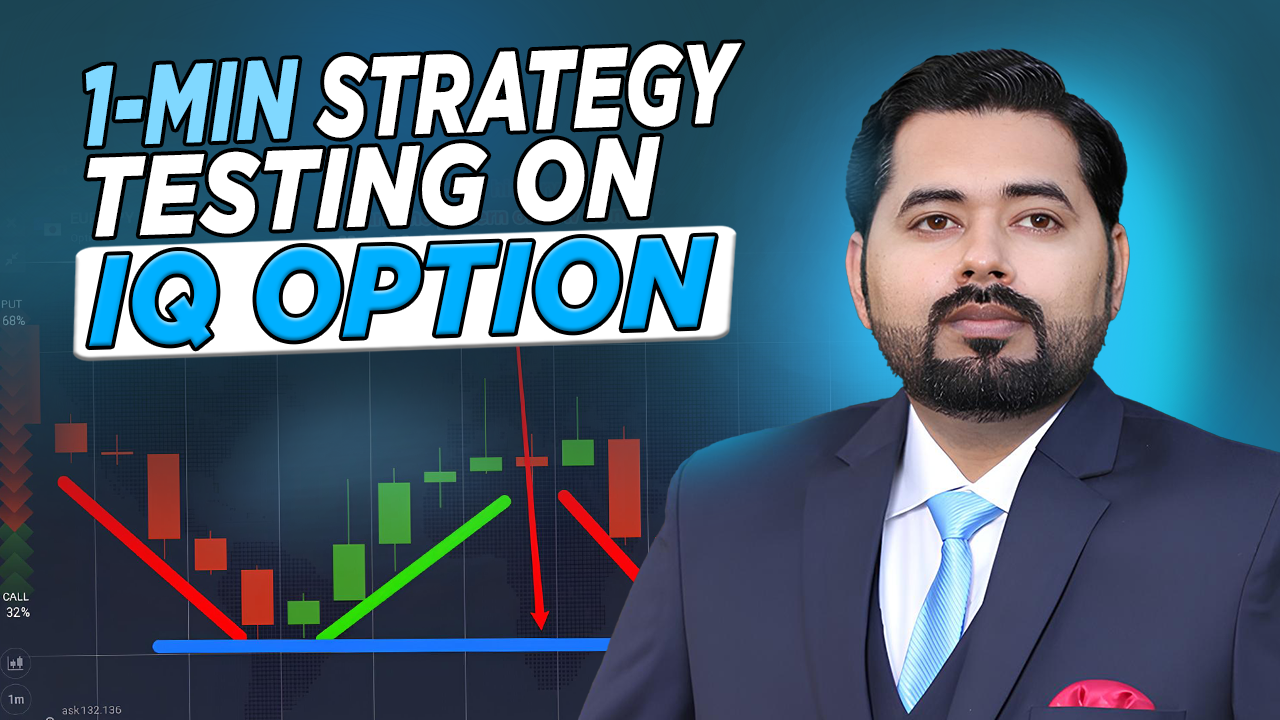
I’ll be honest. I’ve always had a love–hate relationship with 1-minute trades. They’re fast, exciting, and brutally unforgiving. The first time I tried them on IQ Option, my heart rate spiked like I’d just sprinted a hundred metres. You click, you wait sixty seconds, and you either win or lose, it’s trading in its most adrenaline-fueled form.
But are 1-minute strategies just gambling? Or can you actually win consistently? I decided to find out by testing multiple approaches, tracking my win rates, and learning the hard way.
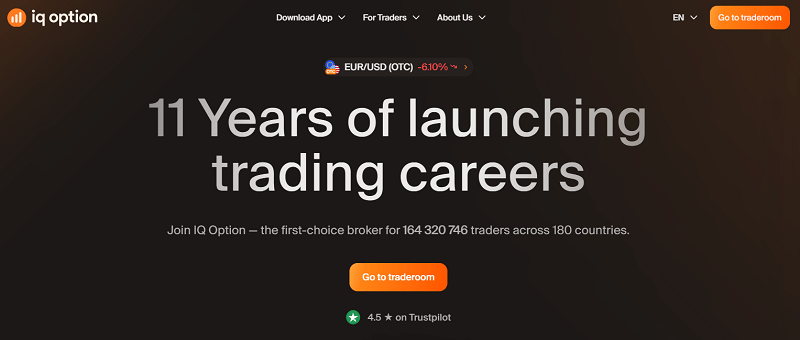
Before we dive into my results, here’s my simple invitation: If you want to try any of these strategies, create your own IQ Option account here Sign up now and get started and follow along. I’ll even share the setups exactly as I used them.
How I Set Up the Experiment
I didn’t want to just throw trades around. I wanted this to be a controlled test. So I set some rules:
- I’d only trade in the same three market sessions: London, New York, and overlapping hours.
- I’d use the same risk per trade: 1% of my capital.
- I’d test each strategy for at least 50 trades before recording results.
- I’d take screenshots of every setup so I could review them later.
This wasn’t about luck. It was about figuring out if short-term trading on IQ Option can actually be consistent.
Time to trade is also important. Here’s the guide for the best time to trade.
Strategy 1: Simple Moving Average Crossover
This is the first 1-minute strategy most traders try. I used a 9-period and a 21-period simple moving average (SMA). When the fast SMA crossed above the slow SMA, I went long. When it crossed below, I went short.
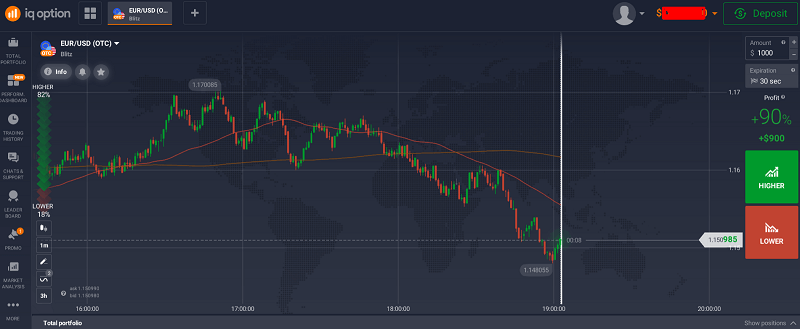
Results: Out of 50 trades, I won 28. That’s a 56% win rate, not bad, but with IQ Option’s payout percentages, I only came out slightly ahead.
Lesson learned: Works best in trending markets. Avoid during choppy price action and also avoid martingale trap.
Strategy 2: Price Action with Support & Resistance
Here, I manually marked strong support and resistance zones on the 1-minute chart. I waited for price to approach those levels and looked for quick reversals. No indicators, just pure price action.
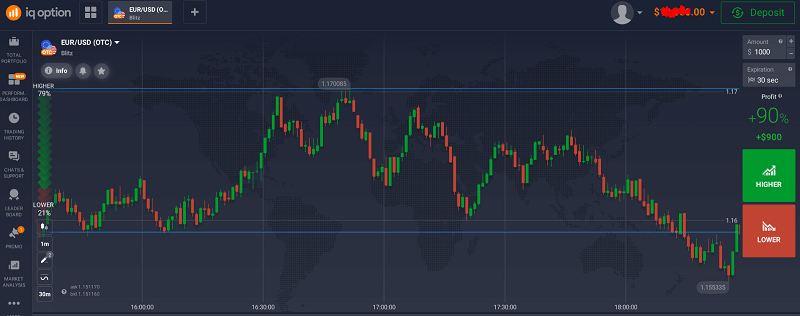
Results: Out of 50 trades, I won 32. That’s a 64% win rate.
Lesson learned: You need patience. The setups don’t come often, but when they do, they’re powerful.
If you’re the type who prefers more control over your entries, this strategy might be perfect for you. Open your IQ Option account and try marking your own zones, it’s a great skill for all timeframes.
Strategy 3: RSI Overbought/Oversold Scalping
I used a 14-period RSI. Over 70 meant overbought, below 30 meant oversold. I’d enter trades in the opposite direction, expecting a quick pullback.
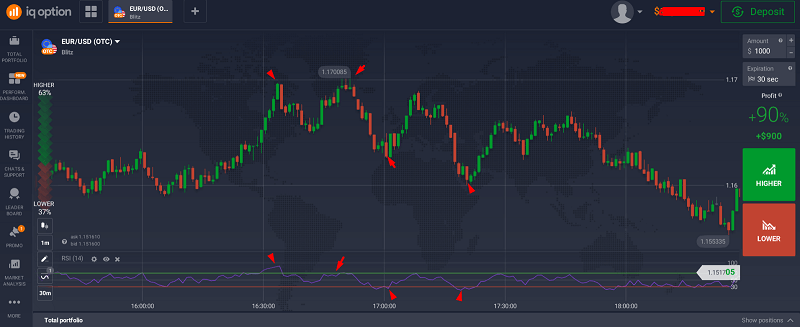
Results: Out of 50 trades, I won 30. That’s a 60% win rate.
Lesson learned: Works surprisingly well in sideways markets, but terrible when price is trending hard.
Strategy 4: Bollinger Band Bounce
Bollinger Bands (20 period, 2 deviation) work well in scalping if you’re disciplined. I entered trades when price hit the outer band and RSI confirmed an overbought or oversold condition.
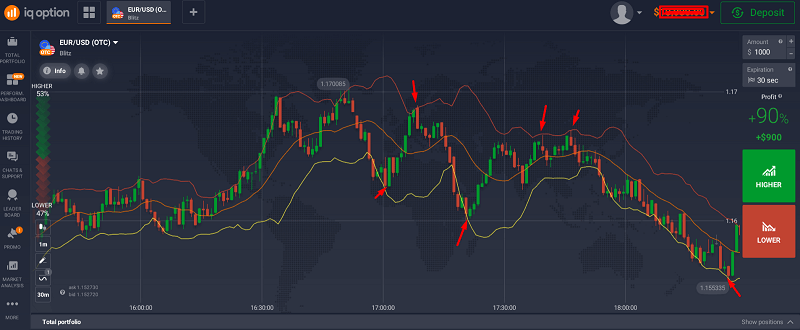
Results: 50 trades, 35 wins. That’s a 70% win rate, the highest so far.
Lesson learned: Combine with time-of-day analysis for best results.
Strategy 5: News Spike Fade
This one is risky. I monitored the economic calendar, waited for a news spike, and traded in the opposite direction after the initial surge.
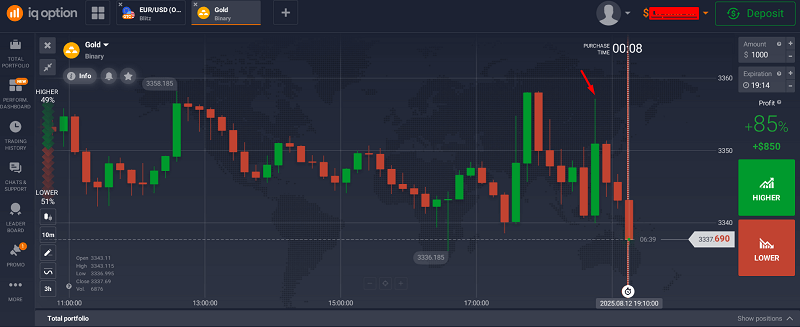
Results: 50 trades, 27 wins. That’s a 54% win rate.
Lesson learned: Great when it works, but news can keep pushing price against you. You can combine indicators to enhance winning odds.
My Overall Win Rates
After 250 trades, here’s how my strategies ranked:
- Bollinger Band Bounce – 70% win rate
- Price Action Support/Resistance – 64% win rate
- RSI divergence– 60% win rate
- SMA Crossover – 56% win rate
- News Spike Fade – 54% win rate
Key Insights from Testing
- Not all 1-minute trades are pure gambling. With structure, discipline, and the right conditions, they can be profitable.
- The time of day matters more than I expected. My highest win rates came between 2 pm and 5 pm London time.
- Avoid overtrading. On some days, I forced trades and saw my win rate collapse.
- Even the best strategy fails in the wrong market conditions.
My Recommended 1-Minute Trading Plan
If I had to start over, here’s what I’d do:
- Trade only two hours a day during your highest win-rate session.
- Use the Bollinger Band Bounce and Support/Resistance as your main setups.
- Keep risk per trade at 1–2% of your account.
- Stop trading after three consecutive losses.
My Final Thoughts
Testing these strategies was eye-opening. I went into this thinking 1-minute trades were basically coin flips, but the data showed otherwise. The key is knowing when not to trade.
If you’re going to try these yourself, do it in a demo first. Then move to live trading with small amounts. And if you want a reliable platform to test on, sign up for IQ Option here and put your own strategies to the test.
Trading short-term is not for everyone, but if you master it, the results can be addictive, in a good way.